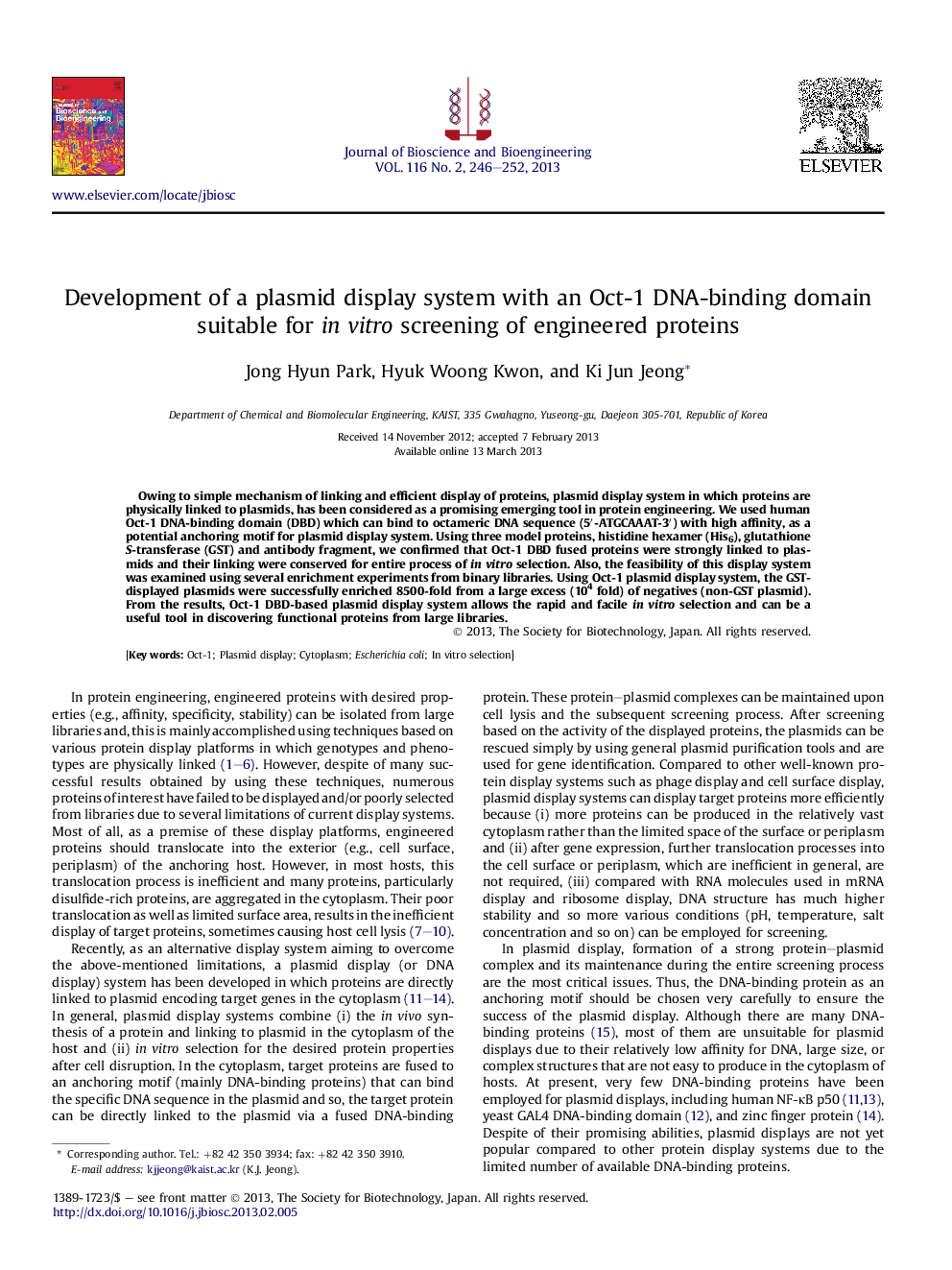| Article ID | Journal | Published Year | Pages | File Type |
|---|---|---|---|---|
| 20629 | Journal of Bioscience and Bioengineering | 2013 | 7 Pages |
Owing to simple mechanism of linking and efficient display of proteins, plasmid display system in which proteins are physically linked to plasmids, has been considered as a promising emerging tool in protein engineering. We used human Oct-1 DNA-binding domain (DBD) which can bind to octameric DNA sequence (5′-ATGCAAAT-3′) with high affinity, as a potential anchoring motif for plasmid display system. Using three model proteins, histidine hexamer (His6), glutathione S-transferase (GST) and antibody fragment, we confirmed that Oct-1 DBD fused proteins were strongly linked to plasmids and their linking were conserved for entire process of in vitro selection. Also, the feasibility of this display system was examined using several enrichment experiments from binary libraries. Using Oct-1 plasmid display system, the GST-displayed plasmids were successfully enriched 8500-fold from a large excess (104 fold) of negatives (non-GST plasmid). From the results, Oct-1 DBD-based plasmid display system allows the rapid and facile in vitro selection and can be a useful tool in discovering functional proteins from large libraries.
